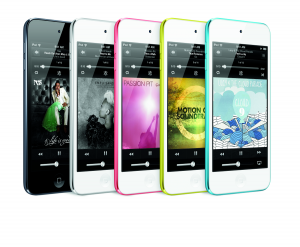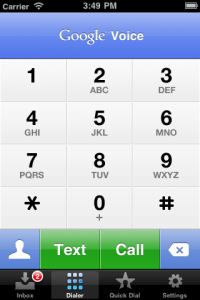Want to Ditch the Carriers and Go Data-Only? Here's How.
Phones are expensive. Not only are we paying for limited data plans, but we're paying for voice and messaging on top of it, even if we don't actually call anyone on our phones that much. And then there's the long-term contracts on top of that. Well, what if it were possible to ditch voice and messaging service and going data-only, using apps to provide those services instead at a much lower cost? Well, it is. There are some hoops to jump through, but for those willing to do it, lower prices and more freedom lie on the other side.
Choose your device carefully.

Of course, if having phone capability at a low price is a necessity, then I'm going to suggest something rather blasphemous for an iOS site: go Android. The Galaxy Nexus from Google and Samsung goes for $349 unlocked, runs the latest version of Android, and is an actual phone. There’s always someone selling a recent Android phone on eBay or Craigslist for a fair price as well, and Android phones as a generality are fairly easy to hack and unlock. Stone me if you will, but hey – Jelly Bean is impressively smooth, it's got a great feature set, and the apps market is improving every day. And if you make the switch, then you can check out our great content at Android Rundown as well.
Find a way to get mobile data.
Just because you do not have a phone plan doesn’t mean that you have to go without data on the go. There are several ways to do this. A 4G/LTE-capable iPad is a great choice, and it may come with Hotspot options depending on the carrier. However, it may be awkward to always bring along an iPad when going out to a bar or walking around the city at night. After all, if you can't upload pictures of your food and drink to Instagram, what's the point of going out, anyway? The carriers all offer their own hotspots with LTE capability, but are pricey without commitments and come with data tiers. Still, they're cheaper than phone plans with similar data limits.

NetZero offers the same WiMAX service with similar hardware as Clear, but with options including free limited data. Going wifi-only is a choice too, considering how many places offer it now. Of course, the drawback there is that where there’s no wifi, there’s no way to get on the internet. For those with unlocked phones who want some kind of traditional-yet-limited phone service plan as a fallback, T-Mobile offers a plan where by paying $3 on the day you use it, you can get up to 200 MB of data at 4G speeds with unlimited calling and messaging. This is great for the iPhone 4S, which T-Mobile will soon support at full 4G (HSDPA) speed.
Get a phone number, send some texts, make some calls

Now, the emphasis is on ‘official’. Talkatone can log in as a Google Talk client with phone calling capability, can receive calls in the background with push notifications, and it can receive SMS notifications. Your mileage may vary on getting it working with some internet connections, though. It is free to use the basic features, with premium subscriptions available for up to $19.99 per year.
Other options for calling and texting? Textie provides free texting, and was designed in part by Loren Brichter of Tweetie fame. Skype offers texting and calling from their app as well. It’s $3/month for calling to the US and Canada, which then allows for a $30 per year Online Number that can be used for direct calling. SMS is possible, but only through Skype Credit, so get $10 of credit and use that for texting, or combine with another service like Google Voice. Still, this all works out to be about $6-$7 per month.
By doing all this, you’re kind of trying to hack the system that wants you to pay a lot of money for voice, messaging, and data. And the system loves getting your money for all that, and there will be spots where it will be frustrating. But there are just enough holes in the system that can be exploited for the savvy consumer looking to do everything over data connections. That’s what I’m trying to do, and I wish you all luck in trying to get it to work. Are you attempting the same thing? Let us know your experience in the comments below.


